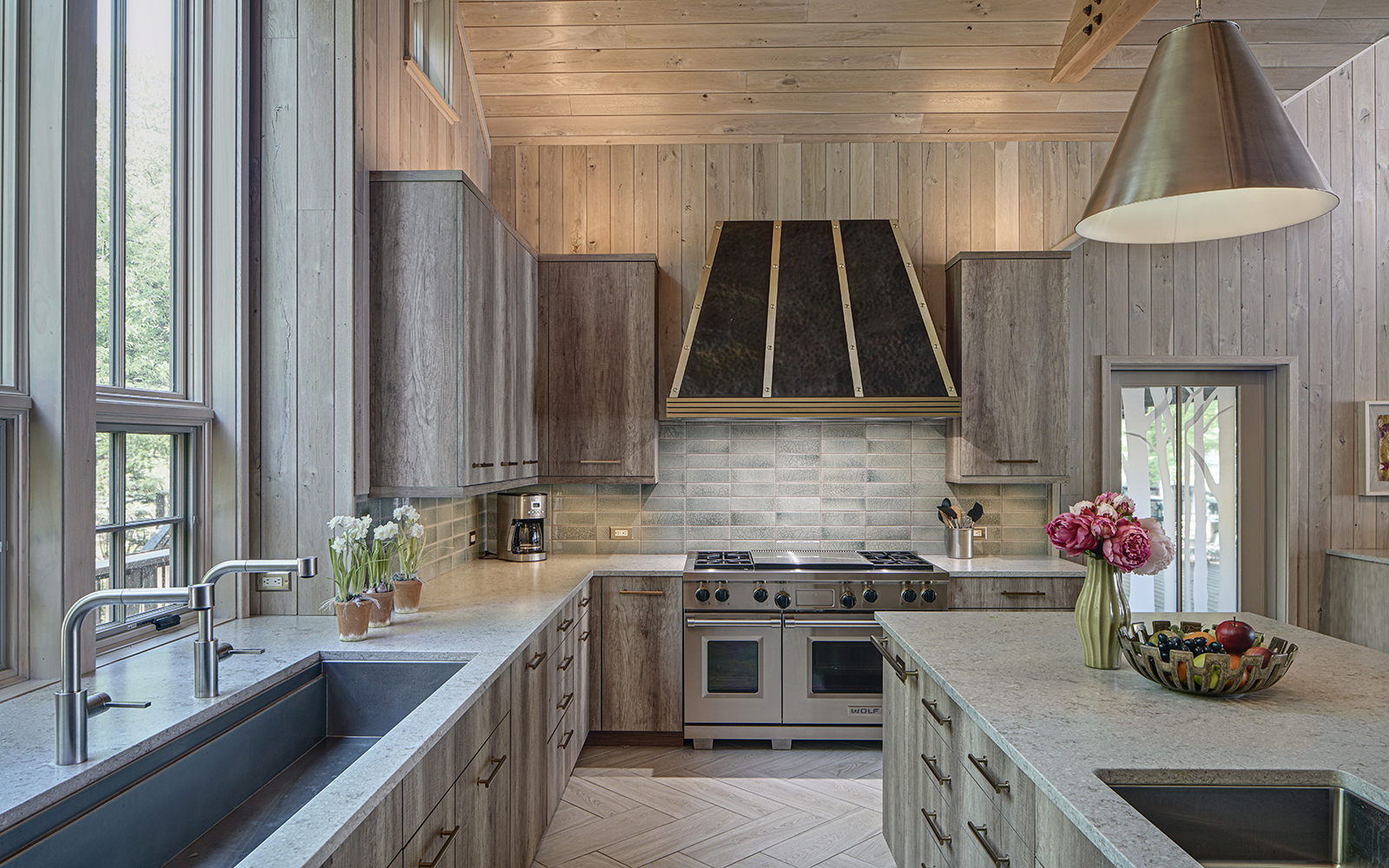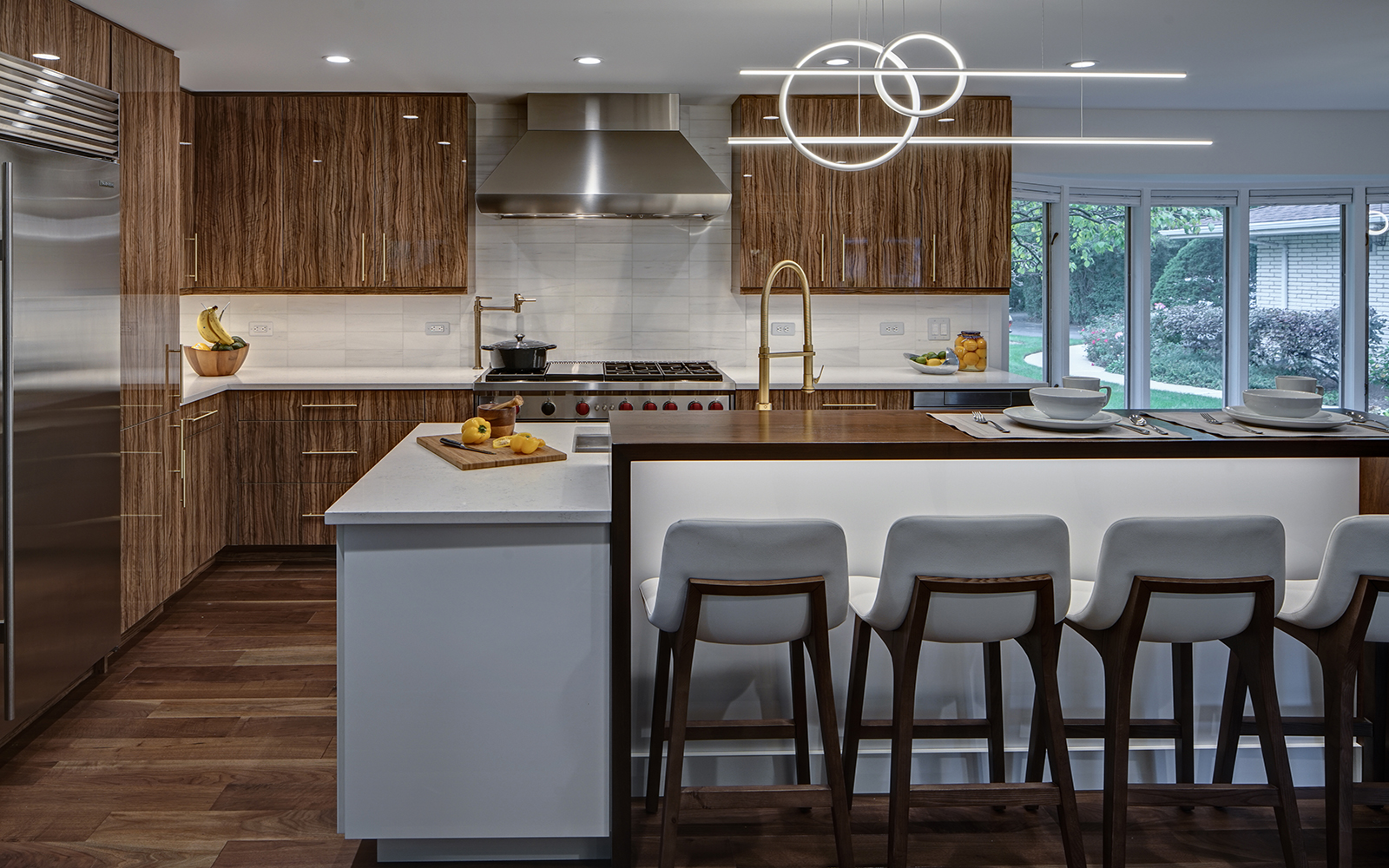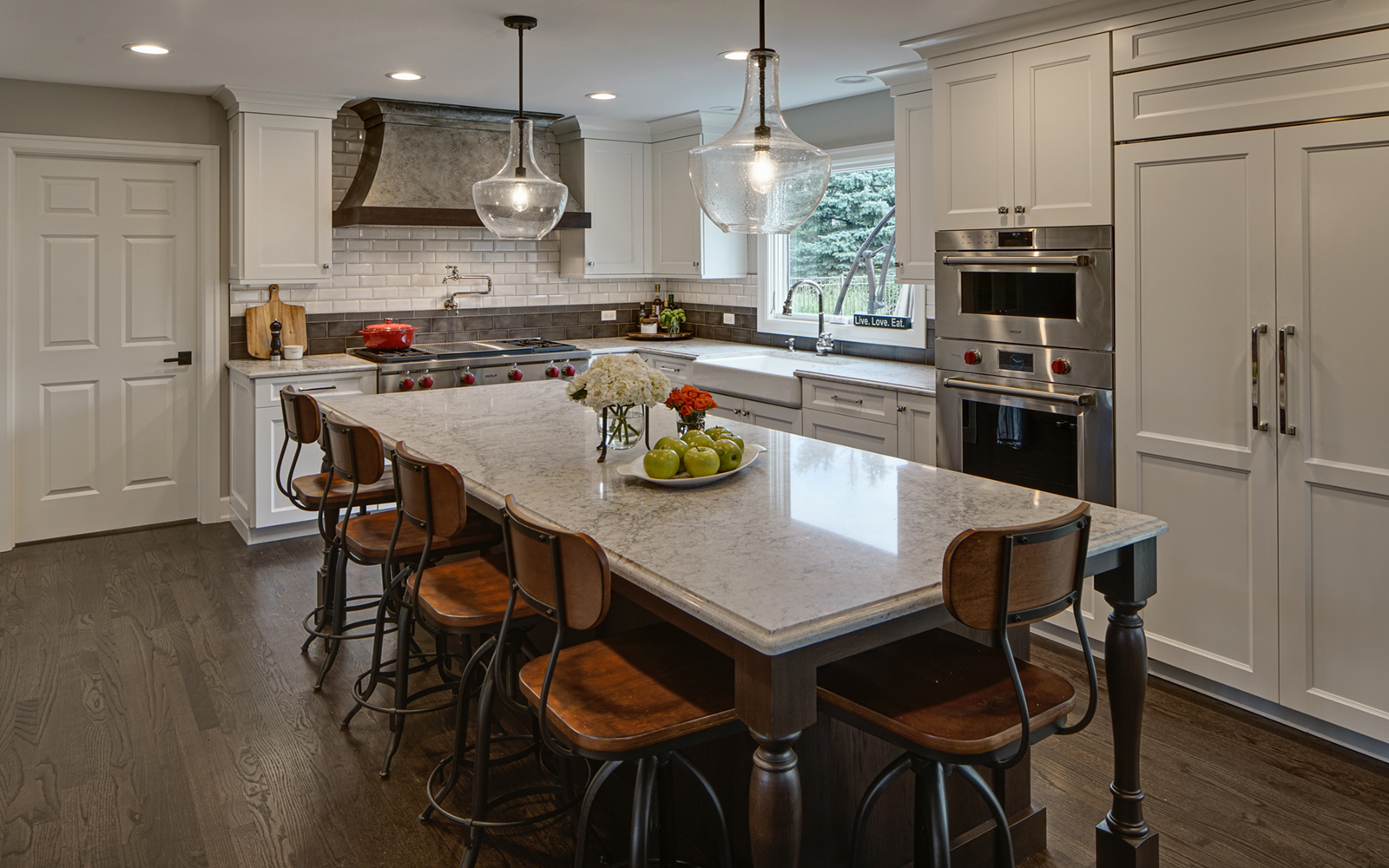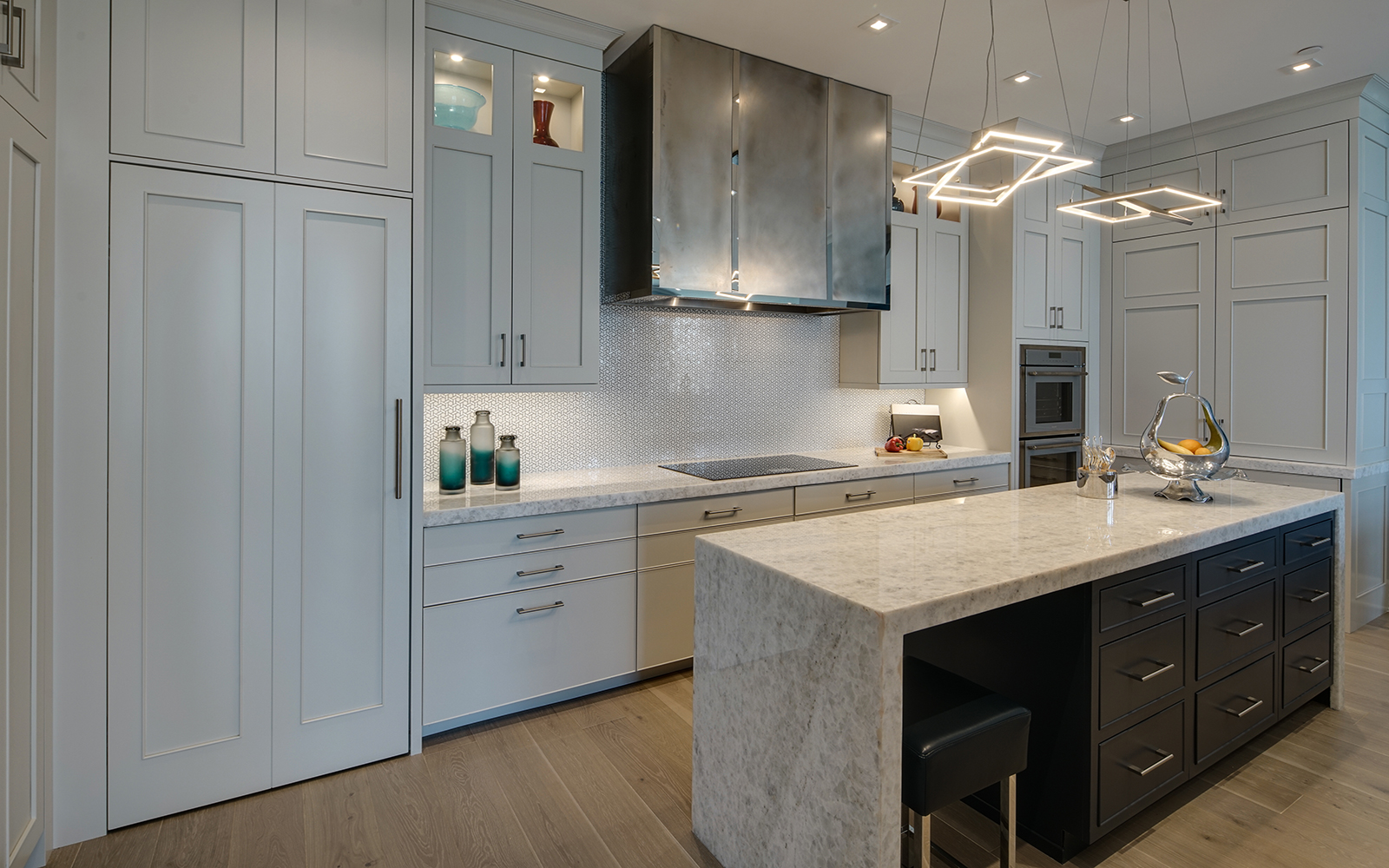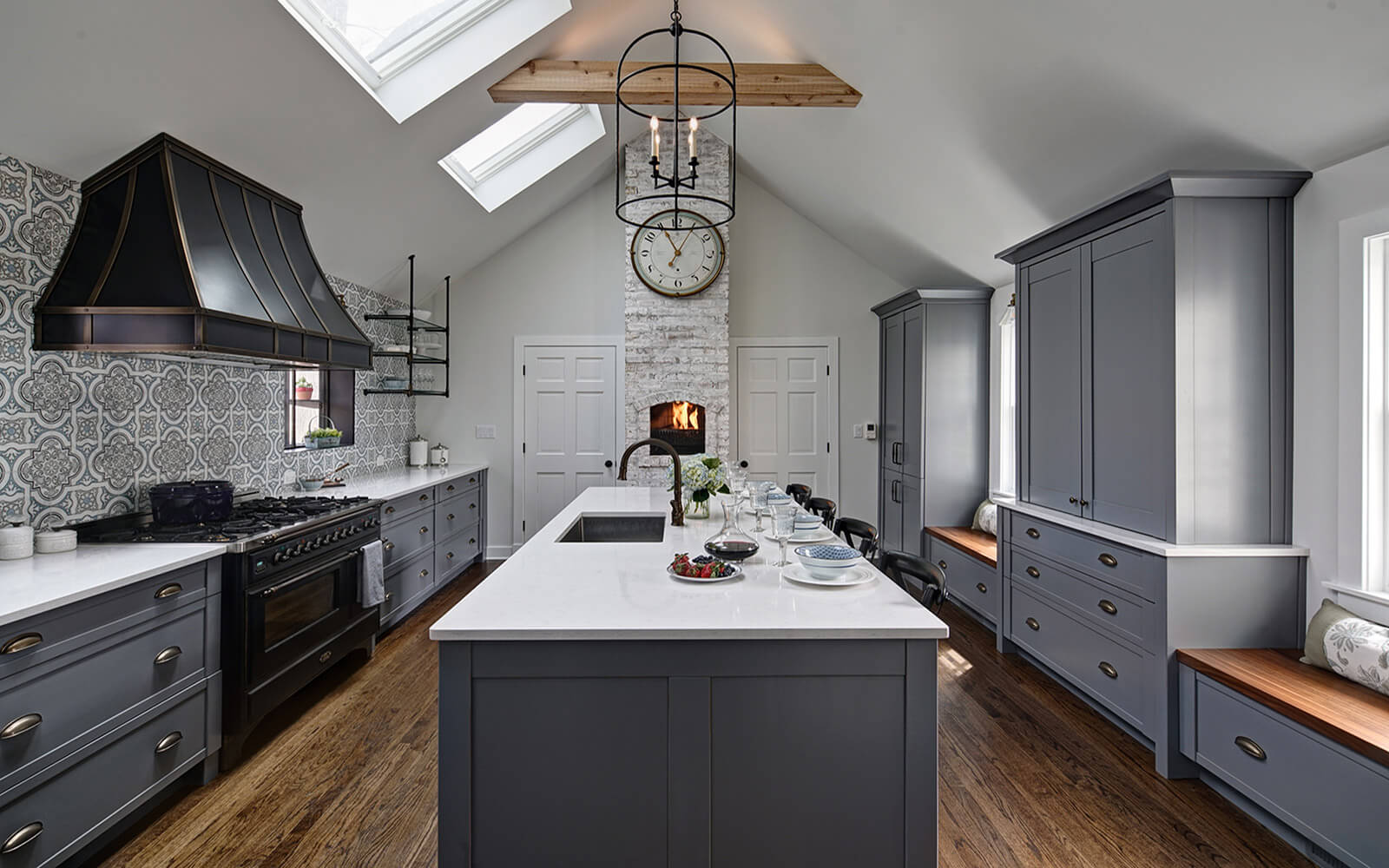Guide to Choosing Your Kitchen Hood
Guide to Choosing Your Kitchen Hood
Choosing a kitchen hood is a crucial aspect of any kitchen design. The right kitchen hood will give your kitchen that professional and luxurious look you want no matter what your kitchen style is. The right hood has the ability to catch the eye and make a statement, so it is important to make the right decision when choosing your range hood.
However, a range hood also has important functionality that must be considered when making your selection. Cooking is one of the main sources of air pollutants in the home, and it is your kitchen hood that keeps the air in your home clean. Hoods also have a number of other benefits:
- Keeping your kitchen clean from smoke stains
- Providing additional lighting
- Reducing the risk of carbon monoxide poisoning
- Cooling down the kitchen while you cook
Whether you’re in the market for a range hood for its health and safety benefits or to create a luxurious atmosphere, this guide to choosing your kitchen hood will tell you everything you need to know to choose the best hood for your kitchen.
Types of Kitchen Hoods
There are many types of kitchen hoods to choose from. This is because kitchen hoods will be different based on your kitchen design and cooking needs. To choose the right type of hood for your kitchen design, you need to consider the layout of your kitchen. This guide to choosing your kitchen hood will help.
Ducted or Non Ducted Hoods
A ducted range hood is ideal. This means that the smoke, humidity, odor and heat from your kitchen are exhausted to the outdoors. You may also hear this referred to as a vent hood or an exhaust hood. However, depending on the layout of your kitchen and your budget, this may not be possible.
Whether your range is located on an outer wall is an especially important factor. The farther away from an outer wall the range hood is located, the more powerful the hood needs to be to expel smoke.
If you are unable to have a ducted range hood, a non ducted hood is the next-best thing. Ductless hoods filter the air and recirculate it into your kitchen. While ductless hoods can’t reduce the heat or humidity in your kitchen, they can filter out smoke, odor and grease, creating cleaner air.
Under Cabinet Range Hood
Under cabinet range hoods are the most common type of kitchen hood. These hoods are installed underneath your cabinets and above your range.
These hoods do not take any wall space, so they work well in small to medium kitchens. They also work to maximize your cabinet space. Under cabinet range hoods are typically ductless. Therefore, under cabinet range hoods can be installed relatively easily, making them ideal for a simple kitchen remodel.
Wall Mount Range Hood
Wall mount range hoods are installed on the wall above your cooktop. However, they do not go underneath your cabinets. Instead, wall mounted range hoods have a flue, similar to a chimney, that extends above them to the ceiling. The price point of wall mount hoods is higher than under cabinet range hoods, but many people prefer their aesthetic.
Wall mount range hoods are often larger than under cabinet hoods, extending to the full size of the cooktop in order to capture all the smoke produced by cooking. This, combined with the wall space it takes up, makes a wall mount range hood more suitable for medium to large kitchens.
Island Range Hood
Island hoods are designed for cooking surfaces that are located on a kitchen island. These hoods are not mounted to a wall or to cabinets but to the ceiling. They appear similar to wall mount range hoods because they have a flue that extends to the ceiling as well. Island range hoods are more difficult to install and need to be more powerful because of the distance from the range hood to the outdoors. This increases the price point.
Like wall mount range hoods, island hoods normally extend to the full size of the cooking space to capture all smoke. As you may have guessed, these types of range hoods are suitable only for large kitchens with a cooking island.
Downdraft Range Hood
Downdraft hoods are not as effective as other hoods but may suit your kitchen design if you do not want a visible hood. Downdraft hoods employ ducts on the floor to move smoke and heat from the kitchen. Since the ducts are below the cooking surface, they are less effective in capturing smoke and heat.
Downdraft range hoods are normally used when there is a kitchen island but the homeowner does not want an island hood. This may be because an island hood would not visually fit into the kitchen design or because the investment for an island hood is too high. In these cases, a downdraft range hood is an option.
Custom Range Hood
You can always opt for a custom range hood. If you want your range hood to seamlessly fit into your cabinetry, you may prefer this option. A hood can be crafted for your specific kitchen design with any shape, material, and features you like.
Materials Used for Kitchen Hoods
There are a few common materials used for kitchen hoods. Though it is most common to have a metal range hood, a variety of metals can be used, and wood and glass options for range hoods also exist.
Metal
If you’re interested in a metal range hood, you have plenty of options. These include stainless steel, copper, bronze, zinc and nickel. Your selection will come down to what matches your kitchen design and your personal preference, but you should take into account durability and the ease of cleaning and maintaining your hood.
Stainless steel is one of the most popular metals for range hoods for a variety of reasons. Perhaps most obvious is that many kitchens have stainless steel appliances and kitchen tools, so a stainless steel hood blends seamlessly into the kitchen design. Therefore, it is a great investment for many kitchens.
Copper is another popular option for metal range hoods. Copper has the elegant, luxurious look that many people want for their kitchen design.
Other options available for metal range hoods have qualities similar to stainless steel and copper. Metals used for range hoods are generally durable and simple to clean and maintain. They just need to be wiped down with a cloth after use, and filters need to be removed and cleaned from time to time.
Cost, kitchen design, and personal taste may come into play in selecting a metal for your hood. Bronze, for example, is one of the most durable materials; however, it also comes at a higher price point.
Glass
Tempered glass is an emerging trend for more modern range hoods. It takes up less space than other materials and is transparent. This makes it perfect for minimalist kitchen designs or if you want your kitchen to appear more open and spacious. Similar to metal, glass can be cleaned by wiping with a cloth or all-purpose cleaner after use.
Wood
Wood is a classic option for range hoods. It is often used in traditional kitchens or for the timeless look it provides. Wood is not likely to go out of style and will suit many different kitchen designs.
When considering wood hoods, it’s important to know that the quality of wood used is very important due to the heat a hood is subjected to. The wood selected must be durable. The more durable wood is, the higher the cost becomes, so keep that in mind.
You should also consider that a wood hood can be more difficult to clean. Wood cannot simply be wiped clean. Since wood is porous, it will hold bacteria, and so it requires special cleaning products and more regular cleaning.
Shapes and Styles of Kitchen Hoods
So you’ve determined the type of kitchen hood that suits your kitchen best and considered materials for your hood. Now you can move on to the shape and style. The type of hood you’ve selected will inform the styles you are able to choose from, so be sure to keep that in mind when selecting the shape and style of your kitchen hood.
Chimney-Shaped
A chimney-shaped hood is very likely what you imagine when you think about kitchen hoods. The signature element of the chimney-shaped hood is the differentiation between the base and the flue. A flue is a vent that extends up the wall and into the ceiling to exhaust the air. It is narrower than the base of the hood, which ideally extends to the full size of the cooking space. As the name hints, the wide base combined with the narrower flue imitates the look of a chimney.
Chimney-shaped hoods are available in nearly any material used for range hoods. They also are available for both wall mount range hoods and island hoods, to fit into a variety of kitchen designs, even in small kitchens.
Canopy-Shaped
A canopy style is almost exclusively seen in island range hoods. This style of hood is more minimalist, opening up space above your island. The base of a canopy-shaped hood is just as wide as other styles—ideally, the full size of the cooktop. However, it is much narrower from top to bottom. It appears more like a thin canopy rather than a thick chimney base.
Glass is a popular material used with this style because its transparency creates a more open, minimalistic space. Canopy hoods also come in curved rather than flat styles.
Hidden
Maybe you don’t want your range hood to stand out or you don’t want to see it at all. Instead, you’d like to camouflage it. That is most definitely an option. Two of the best options for keeping your hood out of the spotlight are downdraft range hoods and under cabinet range hoods.
As you know, downdraft hoods have ducts in the floor, making them completely invisible. On the other hand, under cabinet hoods are installed below your cabinets, making them smaller and less noticeable than other kitchen hoods.
While this may be the best style for your kitchen, it is important to take into account the effectiveness of these range types before making a decision. Recall that downward hoods are less effective because of their location on the ground. Similarly, under cabinet hoods are less effective because they are ductless and will only filter the air, not exhaust it outdoors.
How to Find the Best Range Hood for Your Kitchen’s Design
Now that you are an expert on the types of range hoods, materials and styles, you need to consider the features of kitchen hoods and your future cooking needs in order to choose the best range hood for your kitchen.
Consider Ventilation Type
Power, noise, size and maintenance are important factors to consider when looking for a kitchen hood, as is whether your hood is ducted or ductless.
When deciding whether to choose ducted or ductless for your range hood ventilation, remember that ducted ventilation will always be more efficient and require less maintenance than ductless range hoods. Since ductless hoods depend on filtering to clean the air, you will need to clean and replace the hood filter far more often than for a ducted hood. Ducted filters will even catch grease that will need to be removed and dumped out. Since ductless hoods move the air rather than recirculate it, filters do not need to be cleaned on a regular basis.
Consider Size and Power
The size and amount of power of your hood must correlate to the size and power of your range.
It is recommended that a hood be the same width as the range and extend from the back of the range to cover at least half of the front burners. Ideally, the base of the hood will be the same size as the range, fully covering all the burners.
In regard to power, the more powerful your range hood is, the more effective it will be. Range hood power is measured in cubic feet per minute (CFM). This difference is because island hoods are not directly on an outer wall. This requires the hood to move the air farther before it can be exhausted outdoors.
Other features to think about are lights, fan speeds, sensors, and automation. Most hoods have extra lighting to help you see while you cook. When choosing a hood, think about how much light you need over your cooktop. Also, many hoods have multiple fans. This allows you to set the fans to high or low depending on your needs. Some higher-end range hoods even employ sensors that will automatically turn your hood off and on depending on the air temperature. Even more advanced automations can adjust fan speed as well.
Avoid Pitfalls
Finally, be careful to avoid common pitfalls. Common pitfalls include choosing a range that is not large or powerful enough for your needs. You must ensure that the installation is done well. To avoid pitfalls, talk to professionals about what will work for your kitchen design. Using the National Kitchen + Bath Association (NKBA) website, you can find professionals in your area. Be sure to ask about size, power, and installation.
Choose the Right Range
This guide to choosing your kitchen hood has outlined the most important aspects of choosing the best range hood for your kitchen. You now know what types of hoods are available, what materials and styles you can choose from, and what you should consider when choosing your kitchen hood.
Adding a range hood to your kitchen design provides plentiful benefits. Not only can it enhance the look of your space, but it will make your kitchen more functional by cooling down and cleaning the air while you cook.
If you’re ready to start your kitchen remodel or need support selecting a range hood, Request a Design Consultation now!

